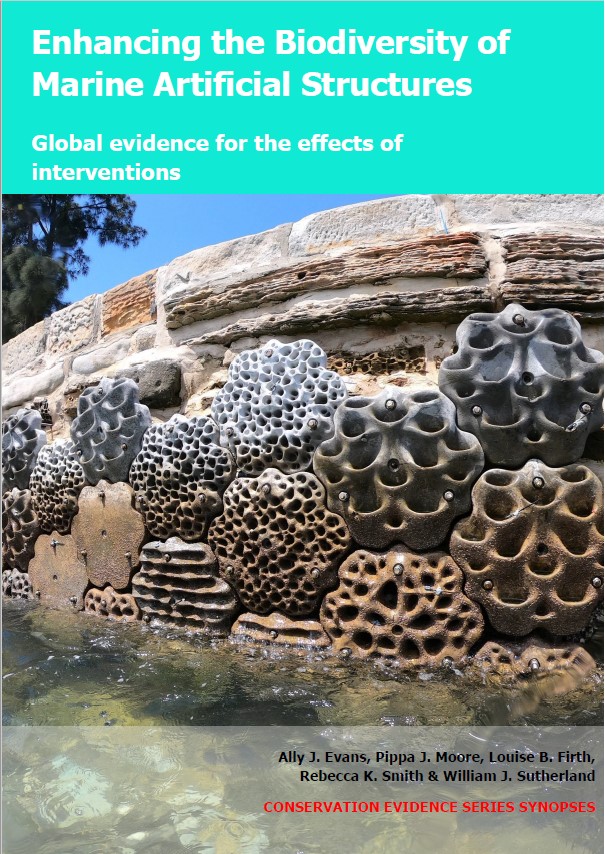Create natural rocky reef topography on subtidal artificial structures
-
Overall effectiveness category Awaiting assessment
-
Number of studies: 1
View assessment score
Hide assessment score
How is the evidence assessed?
-
Effectiveness
not assessed -
Certainty
not assessed -
Harms
not assessed
Study locations
Supporting evidence from individual studies
A replicated, randomized, controlled study in 2009 on a subtidal rocky reef on open coastline in the Adriatic Sea, Italy (Perkol-Finkel et al. 2012) found that creating natural rocky reef topography on settlement plates did not increase the abundance of juvenile canopy algae Cystoseira barbata that settled onto plates. After five months, there was no significant difference in the average abundance of juveniles on settlement plates with natural rocky reef topography (deep topography: 23/plate; shallow: 28/plate) and plates without (19/plate). Clay settlement plates (100 × 100 mm) were made with and without natural rocky reef topography imprinted on their surfaces using pieces of natural rock as the clay set. Six plates with each of deep (imprinted 5 mm deep) and shallow (1–2 mm) topography and six plates without were randomly arranged horizontally at 3 m depth on a rocky reef with existing adult canopy algae in March 2009. Juvenile canopy algae on plates were counted after five months.
Study and other actions tested
Where has this evidence come from?
List of journals searched by synopsis
All the journals searched for all synopses
This Action forms part of the Action Synopsis:
Biodiversity of Marine Artificial Structures
Biodiversity of Marine Artificial Structures - Published 2021
Enhancing biodiversity of marine artificial structures synopsis





)_2023.JPG)














